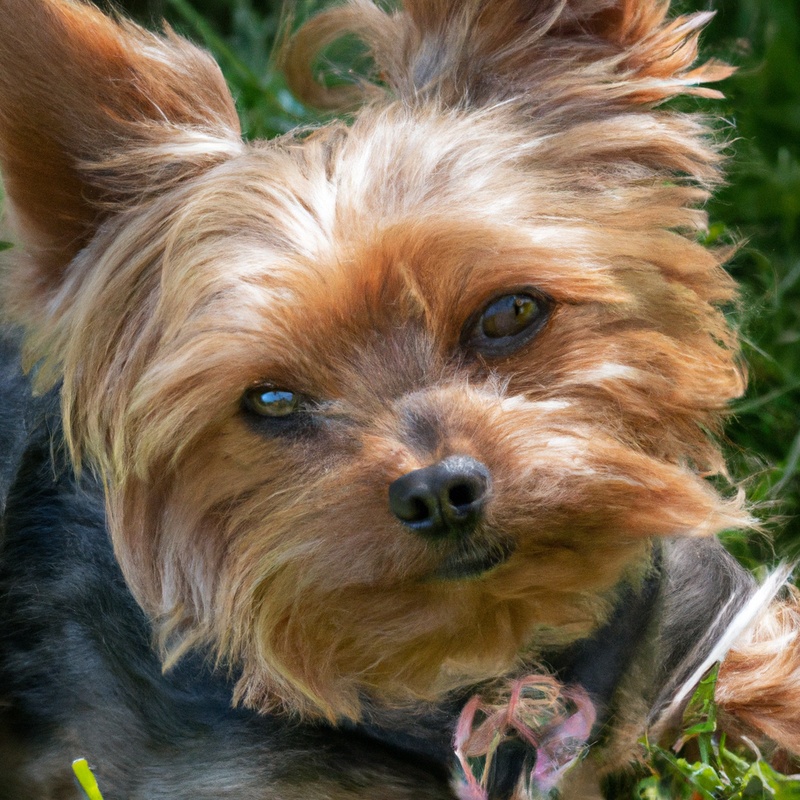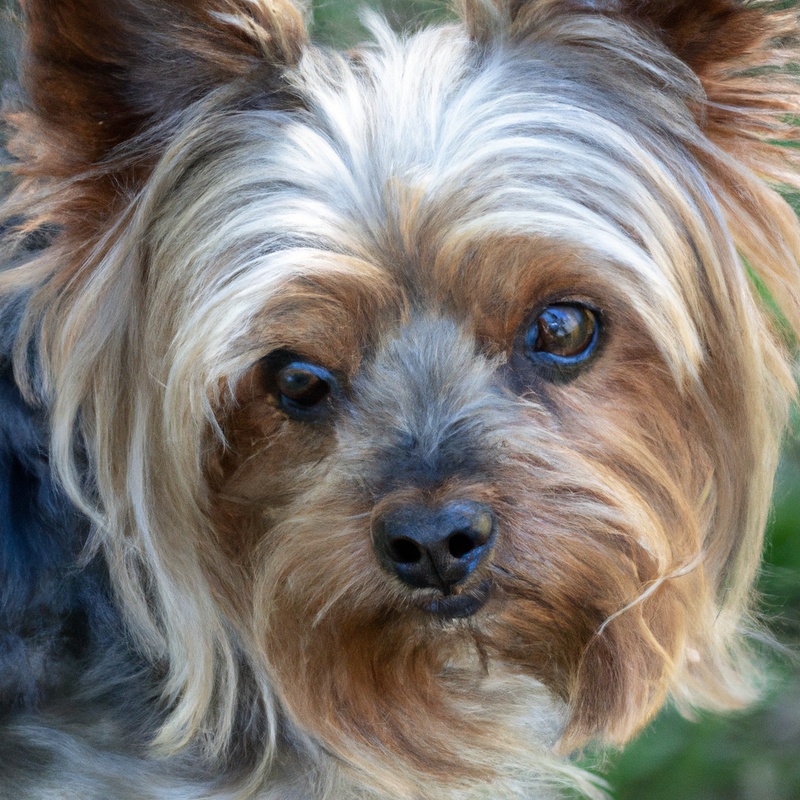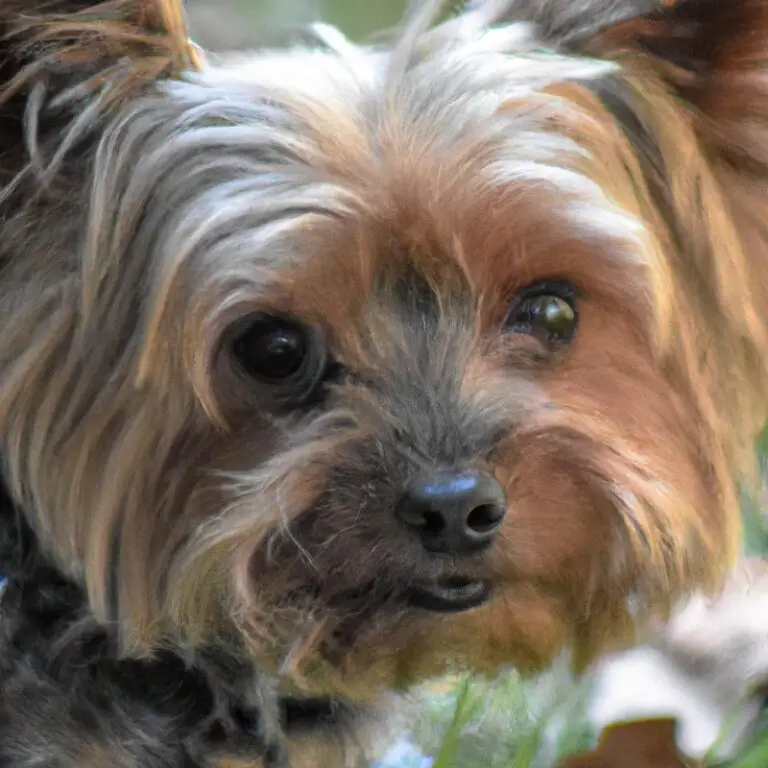How Do I Crate Train My Yorkshire Terrier?
Key Takeaways:
- Start crate training your Yorkshire Terrier gradually to ensure a positive experience.
- Use positive reinforcement techniques, such as treats and praise, to encourage your Yorkshire Terrier to enter and stay in the crate.
- Make the crate a comfortable and inviting space for your Yorkshire Terrier by adding bedding and toys.
- Consistency is key – establish a routine and be patient while crate training your Yorkshire Terrier.
Are you struggling to crate train your Yorkshire Terrier? Fret no more, because I’ve got you covered! As a devoted dog owner myself, I understand the importance of crate training for both you and your furry friend.
In this blog post, I’ll guide you through the entire process, from understanding the basics of crate training to handling common challenges along the way.
Whether you’re a first-time pet parent or just need some expert guidance, I’m here to help you create a positive and comfortable crate training experience for your Yorkshire Terrier. So, let’s get started, shall we?
| Step | Description |
|---|---|
| 1 | Choose a designated area in your home for the crate. It should be a quiet and comfortable space. |
| 2 | Introduce your Yorkshire Terrier to the crate by leaving the crate door open and placing some treats or toys inside. |
| 3 | Encourage your Yorkshire Terrier to enter the crate by using treats and praise. Gradually increase the amount of time they spend inside the crate. |
| 4 | Start closing the crate door for short periods while your Yorkshire Terrier is inside. Make sure to stay nearby to reassure them. |
| 5 | Slowly increase the duration of crate time, but always provide your Yorkshire Terrier with breaks for exercise and bathroom breaks. |
| 6 | Use a cue word or phrase, such as “crate” or “go to your bed”, to signal to your Yorkshire Terrier that it’s time to enter the crate. |
| 7 | Make the crate a positive and comfortable space by providing your Yorkshire Terrier with a soft bedding, toys, and occasional treats. |
| 8 | Gradually increase the distance between you and the crate while your Yorkshire Terrier is inside. This will help them get used to being alone in the crate. |
| 9 | Consistency is key. Stick to a regular schedule for crate training, including feeding times, bathroom breaks, and exercise. |
| 10 | Always reward your Yorkshire Terrier with praise, treats, or playtime when they enter the crate willingly. |
Understanding the Basics of Crate Training
What is Crate Training?
What is Crate Training? Crate training is a method of teaching your dog to view their crate as a safe and comfortable space.
It involves using a crate or a small enclosed space as a training tool.
Dogs have a natural instinct to find a den or a small, secure area to rest and feel safe. Crate training capitalizes on this instinct by providing a designated space for your dog.
Crate training serves several purposes, including:
- Housetraining: A crate can be an effective tool in housebreaking your dog. Dogs generally do not like to soil their sleeping areas, so having a crate that is appropriately sized for your dog can help them learn to hold their bladder and bowels.
- Safety and Security: Crate training provides a safe and secure space for your dog when you are unable to supervise them. It prevents them from engaging in destructive behaviors or getting into potentially dangerous situations.
- Traveling: Crate training makes traveling with your dog easier and less stressful. A well-trained dog who is comfortable in their crate can travel calmly and safely in a crate during car rides or flights.
Remember, crate training should always be done in a positive and gentle manner. It is important to never use the crate as a form of punishment.
Instead, make it a positive experience by providing your dog with treats, toys, and comfort inside the crate.
Gradually increase the amount of time your dog spends in the crate, always rewarding them for their good behavior.
Why Should You Crate Train Your Yorkshire Terrier?
Crate training your Yorkshire Terrier can have numerous benefits for both you and your furry friend. Firstly, it helps with potty training.
Dogs naturally avoid soiling their sleeping areas, so when they are in their crate, they are more likely to hold it until you let them out.
This can speed up the housebreaking process significantly. Another reason to crate train is that it provides a safe and cozy space for your Yorkshire Terrier.
Dogs are den animals by nature, and having a crate can create a sense of security for them.
It gives them their own private space where they can retreat and relax. Additionally, crate training can help with separation anxiety.
When your Yorkshire Terrier is comfortable in their crate, it becomes a familiar and comforting place for them.
This can help reduce stress and anxiety when you have to leave them alone for a short period of time. Lastly, crate training makes travel easier.
Whether you are going on a road trip or visiting the vet, having your Yorkie comfortable in their crate makes transportation much more manageable.
It keeps them secure and prevents any potential accidents or injuries. By crate training your Yorkshire Terrier, you are not only providing them with a safe and comfortable space, but also helping them become a well-behaved and happy companion.

When is the Right Time to Start Crate Training?
When should you begin crate training your Yorkshire Terrier? The ideal time to start crate training is when your puppy is still young, preferably between 8 to 10 weeks old.
This is the age when puppies are more receptive to learning and adapting to new routines.
By introducing the crate early on, you can teach your Yorkshire Terrier that the crate is a safe and comfortable space. This will help alleviate any anxiety or stress they may feel when confined.

Selecting the Right Crate for Your Yorkshire Terrier
Choosing the Correct Size Crate
Choosing the correct size crate for your Yorkshire Terrier is an important step in crate training. First and foremost, you want to make sure that the crate is big enough for your dog to stand up, turn around, and lie down comfortably.
But it shouldn’t be too big either, as having too much space may encourage them to use one end as a bathroom.
To choose the right size crate, measure your Yorkshire Terrier from the tip of their nose to the base of their tail, and from the top of their head to the ground. Then add a few inches to each measurement to ensure they have enough room.
It’s also important to consider the height of the crate.
Your Yorkshire Terrier should be able to sit fully upright without their head touching the top. Keep in mind that puppies grow quickly, so if you’re getting a crate for a puppy, choose a crate with a divider that can be adjusted as they grow.
This way, you can start with a smaller space and gradually expand it.
By choosing the correct size crate, you can create a comfortable and safe space for your Yorkshire Terrier during crate training.
Considerations for Crate Material and Design
Considerations for Crate Material and Design: When selecting a crate for your Yorkshire Terrier, there are a few important considerations to keep in mind regarding the material and design of the crate. First and foremost, make sure the crate is made of sturdy and durable material.
You want a crate that can withstand your Yorkie’s playful nature without getting damaged easily.
Look for crates made of high-quality metal, plastic, or wood. Another crucial aspect to consider is the size of the crate.
It should be large enough for your Yorkie to stand up, turn around, and lie down comfortably.
However, it shouldn’t be too big that they can easily eliminate in one corner and sleep in another. Additionally, consider the design features of the crate.
Look for crates that have secure latches or locks to prevent your Yorkie from escaping.
Also, choose a crate with good ventilation to ensure proper airflow and keep your pup comfortable.

Essential Crate Accessories for Comfort and Safety
Essential Crate Accessories for Comfort and Safety Alright, let’s talk about some must-have accessories for your Yorkshire Terrier’s crate. First and foremost, a comfortable bedding is important.
Invest in a soft and cozy bed or blanket that your furry friend can snuggle up on.
It will help them feel secure and relaxed. Next, consider adding a crate cover.
This can create a den-like atmosphere for your dog and provide them with a sense of privacy.
It can also help to block out any excess light and noise, making the crate a peaceful and calming space for your pup. Another crucial accessory is a water bowl.
Make sure your Yorkshire Terrier has access to fresh water at all times, even when they’re in their crate.
Look for a bowl that can easily attach to the crate or that is spill-proof to avoid any mess. To ensure your dog’s safety, a sturdy crate pad or liner is essential.
This will not only protect your pup’s paws from getting caught in the crate’s wires or bottom, but also provide a non-slip surface for them to stand or lie on.
Lastly, consider getting some interactive toys or chew bones to keep your dog occupied during crate time. These can help prevent boredom and reduce any anxiety or stress they may experience while in the crate.
By incorporating these essential crate accessories, you can create a comfortable and safe space for your Yorkshire Terrier and make crate training a positive experience for both of you.
Introducing Your Yorkshire Terrier to the Crate
Creating Positive Associations with the Crate
Creating positive associations with the crate is a crucial aspect of crate training your Yorkshire Terrier. First and foremost, make sure the crate is a cozy and inviting space for your dog.
Add soft bedding and perhaps a favorite toy or blanket inside.
By incorporating positive reinforcement, you can help your Yorkie develop a positive association with the crate. Use treats or praise to encourage your dog to enter the crate willingly.
Gradually increase the time your dog spends in the crate, always rewarding them for calm behavior.
To further create positive associations, try feeding your Yorkshire Terrier their meals inside the crate. This will help them associate the crate with something positive and enjoyable.
Gradual Introduction to the Crate
When it comes to introducing your Yorkshire Terrier to the crate, it’s important to take a gradual approach. First and foremost, you want to make the crate a positive and inviting space for your furry friend.
Start by placing the crate in a quiet area of your home where your Yorkie feels safe and comfortable.
Next, encourage your pup to explore the crate on their own terms. Leave the door open and entice them with treats or toys inside the crate.
Let them go in and out as they please, without any pressure or force.
Once your Yorkie starts to show interest in the crate, you can start closing the door for short periods of time. Stay nearby and offer reassurance and rewards to help them feel at ease.
Gradually increase the duration of crate time, always making sure your pup feels comfortable before moving on to the next step.
Using Treats and Rewards to Encourage Crate Exploration
Using treats and rewards can be a great way to encourage your Yorkshire Terrier to explore their crate. It’s important to create a positive association with the crate, so your dog learns to view it as a safe and comfortable space.
Firstly, place some treats near the crate entrance to pique their interest.
Let them approach the crate and reward them for any exploration or sniffing around. Use tasty treats that they love and only give them when they show interest in the crate.
Gradually increase the difficulty, like placing treats further inside the crate, so your dog has to go in to get them.
Make sure to praise and reward them heavily whenever they enter the crate voluntarily. This positive reinforcement will help your Yorkshire Terrier feel more comfortable and eager to explore their crate.
Establishing a Crate Training Routine
Designating a Comfortable and Safe Location
Designating a comfortable and safe location is an important part of crate training for your Yorkshire Terrier. First and foremost, choose a quiet area in your home where your pup can relax and feel secure.
Avoid placing the crate near loud noises or high-traffic areas.
Make sure the crate is the right size for your Yorkshire Terrier – not too big and not too small. It should be just big enough for them to stand, turn around, and lie down comfortably.
Place soft bedding or a blanket inside the crate to create a cozy spot for your furry friend.
This will help them feel more comfortable and at ease. Keep the crate clean and ensure proper ventilation.
Good air circulation is important for your pup’s well-being.
Consistency in Crate Usage and Schedule
Consistency in crate usage and schedule is key when crate training your Yorkshire Terrier. First and foremost, make sure to use the crate consistently every day, whether it’s for nighttime sleep, alone time, or when you need to leave the house.
Stick to a regular schedule for crate usage.
This means establishing a routine for your Yorkie’s crate time, such as feeding them in the crate or having designated crate nap times. Consistency in when and how you use the crate will help your pup understand its purpose and feel comfortable inside.
By using the crate consistently and following a schedule, your Yorkshire Terrier will start associating the crate with positive experiences.
They’ll recognize it as their own safe and cozy space, reducing anxiety and promoting good behavior.
Establishing a Relaxed Atmosphere during Crate Time
First and foremost, it’s important to create a relaxed atmosphere during crate time for your Yorkshire Terrier. This will help your furry friend feel more comfortable and less anxious.
To establish a relaxed atmosphere, try the following:
- Introduce the crate gradually: Start by letting your Yorkshire Terrier explore the crate on their own terms. Leave the door open and place their favorite toys or treats inside to encourage positive associations.
- Keep it comfortable: Make sure the crate is cozy and inviting. Use soft bedding and blankets to create a comfortable space for your pup. You can also add a familiar-smelling item, like a worn T-shirt, to provide reassurance.
- Use positive reinforcement: Reward your Yorkie with treats, praise, and love when they voluntarily enter the crate. This positive reinforcement will help them associate the crate with positive experiences.
- Create a routine: Establish a consistent crate routine to help your Yorkie feel secure and relaxed. Set specific times for crate time, ensuring they have opportunities for exercise, play, and potty breaks outside of the crate.
Positive Reinforcement Techniques for Crate Training
Reward-Based Approach for Good Behavior in the Crate
Reward-based training is a highly effective method for encouraging good behavior in your Yorkshire Terrier while crate training. Instead of relying on punishment or force, the focus is on positive reinforcement.
Here’s how it works:
- Use treats: Whenever your Yorkshire Terrier exhibits desirable behavior in the crate, such as entering willingly or staying quietly, reward them with a tasty treat. This positive association encourages them to repeat the behavior.
- Verbal praise: Along with treats, be sure to shower your pup with verbal praise and affection. Use an excited and happy tone to reinforce that being in the crate is a good thing.
- Toy rewards: You can also provide toys that your Yorkshire Terrier enjoys playing with as rewards for good behavior. This adds an extra element of fun and excitement to their crate time.
Using Commands and Verbal Praise during Crate Training
Using Commands and Verbal Praise during Crate Training When you’re crate training your Yorkshire Terrier, incorporating commands and verbal praise can be extremely helpful. First and foremost, use simple and consistent commands like “crate” or “go to bed” to let your pup know what you want them to do.
Say the command in a calm and firm tone, making sure to avoid shouting.
Once your Yorkshire Terrier enters the crate or settles down, be sure to praise them lavishly with kind words and a cheerful tone. Verbal praise, such as “good job” or “well done,” lets your furry friend know that they’re doing the right thing and encourages them to continue.
Remember to always use positive reinforcement during crate training to create a positive association with the crate.
Avoiding Punishment or Negative Reinforcement in Crate Training
When it comes to crate training your Yorkshire Terrier, it’s important to avoid punishment or negative reinforcement. Using these methods can create fear and anxiety in your dog, making the crate a negative experience.
Instead, focus on positive reinforcement techniques.
First and foremost, never use the crate as a form of punishment. Your dog should view the crate as a safe and comfortable space, not a place to be sent when they’ve done something wrong.
Punishing your dog by locking them in the crate can lead to fear and resistance toward going inside.
Instead, make the crate a positive place for your Yorkshire Terrier. Use treats, praise, and rewards to encourage them to enter the crate voluntarily.
Gradually increase the time they spend in the crate, always providing positive reinforcement.
This will help them associate the crate with positive experiences. Another important tip is to avoid forcing your dog into the crate or using physical force.
This can create negative associations, leading to resistance or fear.
Allow your dog to enter the crate on their own terms, and use positive reinforcement to make it an enjoyable experience.
Handling Common Challenges in Crate Training
Separation Anxiety and Crate Training
Separation Anxiety and Crate Training Separation anxiety can be a common challenge when crate training your Yorkshire Terrier. Many dogs experience anxiety when left alone, and this can lead to excessive barking, destructive behavior, and even accidents in the house.
To help alleviate separation anxiety, crate training can be a beneficial tool.
The crate provides a safe and secure space for your Yorkie, mimicking the den-like environment that dogs naturally seek. This can help them feel more relaxed and comfortable when you are not around.
When crate training for separation anxiety, it’s important to go slow and be patient.
Start by introducing the crate gradually, allowing your Yorkie to explore and get used to being inside. Leave the door open initially, so they can come and go freely.
Next, begin leaving your Yorkie alone in the crate for short periods of time, gradually increasing the duration as they become more comfortable.
Make sure to provide them with plenty of toys and treats to keep them occupied and make the experience positive. It’s also helpful to establish a routine when crate training for separation anxiety.
Stick to a consistent schedule for feeding, walks, and crate time.
This can give your Yorkie a sense of security and help them understand that you will always come back.
Excessive Barking or Whining in the Crate
Excessive barking or whining in the crate can be frustrating, but there are steps you can take to address this issue. First and foremost, make sure your Yorkshire Terrier’s crate is comfortable and inviting.
Add a cozy bed and some of their favorite toys.
Next, gradually introduce your dog to the crate by using positive reinforcement. Start with short periods of time and slowly increase the duration.
Reward your dog with treats or praise when they show calm behavior in the crate.
If your dog continues to bark or whine, try ignoring the behavior. Giving attention to the noise might reinforce it.
Instead, wait for moments of quiet and then reward your dog.
You can also try distracting your dog with a puzzle toy or a Kong filled with treats. This can keep them occupied and mentally stimulated while in the crate.
Remember to be patient and consistent.
Crate training takes time and effort, but with the right approach, you can help your Yorkshire Terrier feel more comfortable and secure in their crate.
Dealing with Accidents or Crate Soiling
Dealing with accidents or crate soiling can be frustrating, but it’s important to handle them properly during crate training. First and foremost, it’s crucial not to punish your Yorkshire Terrier for accidents.
Punishment can create fear and anxiety, making crate training even more difficult.
Instead, focus on positive reinforcement. If accidents happen, calmly clean the crate and surrounding area without making a big deal out of it.
Use an enzymatic cleaner to eliminate odors and discourage future accidents.
Make sure you establish a regular routine for bathroom breaks outside of the crate, taking your Yorkshire Terrier out frequently. Keep a close eye on your pup to anticipate their needs.
If accidents occur frequently, consider reducing the amount of time your Yorkshire Terrier spends in the crate and gradually increase it over time.
Gradually Increasing Crate Time and Freedom
Building up the Duration of Crate Time
Building up the duration of crate time is an important part of crate training your Yorkshire Terrier. The goal is to gradually increase the amount of time your dog can comfortably stay in the crate without any signs of distress or anxiety.
Start by introducing your pup to the crate in short intervals.
Begin with just a few minutes and gradually extend the duration over time. This can be done by rewarding your Yorkie with treats or toys whenever they enter the crate and stay calm.
As your dog becomes more comfortable, you can increase the crate time in increments of 5-10 minutes.
Remember to always use positive reinforcement and make the crate a positive and safe space for your furry friend. It’s important to note that each dog is different, so be patient and go at a pace that suits your Yorkie’s needs.
Building up the duration of crate time should be a gradual process to ensure your dog feels secure and happy in their crate.
Gradual Transition to Leaving the Yorkshire Terrier Alone
Gradual transition is key when it comes to leaving your Yorkshire Terrier alone. First and foremost, start by leaving your pup in the crate for short periods of time while you are still at home.
This will help them get used to being alone in a safe space.
Next, begin to leave the house for brief intervals, gradually increasing the time you’re away. This allows your Yorkshire Terrier to slowly adjust to longer periods of solitude.
Make sure to provide plenty of toys and treats to keep them occupied and make their time alone more enjoyable.
Remember to always reward your pup when they remain calm and relaxed while you are away. This positive reinforcement will help them associate being alone with positive experiences.
With patience and consistency, your Yorkshire Terrier will become more comfortable being left alone over time.
Gradually Expanding the Confined Space
Gradually expanding the confined space is an important step in crate training your Yorkshire Terrier. Start by leaving the crate door open and allowing your pup to explore the space freely.
Add comfortable bedding and toys to make the crate inviting.
As your Yorkshire Terrier becomes comfortable, gradually increase the time they spend inside the crate with the door closed. Begin with short periods and gradually extend the time.
This will help your pup feel more at ease and eventually see the crate as their safe and cozy den.
Using Crate Training for Nighttime and Travel
Introducing the Crate as a Sleep Space
Introducing the crate as a sleep space is an important step in crate training your Yorkshire Terrier. First and foremost, make the crate comfortable and inviting.
Add a cozy bed or blanket, as well as some of your dog’s favorite toys or treats inside.
To get your dog used to the crate as a sleep space, encourage them to explore it during the day. Leave the door open and let them go in and out freely.
You can also toss treats inside to create a positive association.
When it’s time for sleep, gently guide your Yorkie into the crate and close the door. Don’t force them inside or use punishment.
Gradually increase the amount of time they spend in the crate at night, starting with short periods and extending it as they become more comfortable.
Tips for Crate Training during Travel
When it comes to crate training during travel, there are a few tips that can help make the process go smoothly. First and foremost, make sure the crate is the correct size for your Yorkshire Terrier.
It should be big enough for them to turn around and lie down comfortably, but not so big that they can move around too much.
To make the crate a positive and safe space for your pup, gradually introduce them to it before the trip. Start by placing their toys and treats inside the crate and let them explore and get comfortable.
Use positive reinforcement and rewards to help create a positive association with the crate.
During travel, make sure to secure the crate properly in the car or on the plane. Use seat belts or other restraints to prevent any unwanted movement.
Additionally, cover the crate with a lightweight blanket or towel to create a cozy and secure environment.
Remember to keep your Yorkshire Terrier’s comfort in mind during the entire journey. Provide them with water and occasional potty breaks, if possible.
Keeping a familiar item, like their favorite blanket or toy, in the crate can also help them feel more comfortable and at ease.
By implementing these tips, you can make crate training during travel a stress-free experience for both you and your Yorkshire Terrier.
Making the Crate a Familiar Space in New Environments
Making the crate a familiar space in new environments is important for crate training your Yorkshire Terrier. Firstly, place the crate in an area where your dog can see and hear you.
This will help them feel more comfortable and less isolated.
Secondly, make the crate cozy by adding a soft blanket or bed and some familiar toys. This will create a sense of security for your dog.
Lastly, encourage your dog to enter the crate voluntarily by placing treats or their favorite food inside.
This will help them associate the crate with positive experiences. By following these steps, you can make the crate a safe and comforting space for your Yorkshire Terrier, no matter where you are.
Monitoring and Adjusting Crate Training Progress
Recognizing Signs of Successful Crate Training
Recognizing signs of successful crate training is important to ensure that your Yorkshire Terrier is adapting well to the process. First and foremost, a positive attitude towards the crate is a great sign.
If your pup willingly goes into the crate and seems comfortable spending time there, that’s a good indication of progress.
Another sign to look out for is if your Yorkshire Terrier stays calm and relaxed inside the crate. Whining, barking, or excessive scratching at the door may suggest that they are not adjusting smoothly.
On the other hand, if they are able to settle down and take naps without any fuss, it means they are getting used to their crate.
Pay attention to their behavior when you let them out of the crate. If they are excited and happy, it means they are associating the crate with positive experiences.
Likewise, if accidents in the crate become rare and they consistently wait until they are let out to relieve themselves, it’s a sign of successful crate training.
Addressing Setbacks or Regression in Crate Training
Addressing setbacks or regression in crate training is a normal part of the process. It’s important to remember that every dog is unique and may have their own challenges when adapting to the crate.
So here are a few tips to help you deal with setbacks or regression in crate training:
- Patience is key: Remember to be patient with your Yorkshire Terrier. Don’t get frustrated if they have a setback or start regressing. It’s all part of the learning process.
- Go back a step: If you notice your Yorkie having difficulty, go back to the previous step of crate training where they were successful. Revisit that step for a while before moving forward again.
- Gradual progression: Take it slow and make sure to gradually increase the time your Yorkshire Terrier spends in the crate. Pushing them too quickly can cause setbacks.
- Positive reinforcement: Continue to use positive reinforcement techniques such as treats, praise, and toys to encourage your Yorkie to associate the crate with positive experiences.
- Consistency: Stick to a consistent routine and schedule for crate training. This will help your Yorkshire Terrier understand what is expected of them and minimize setbacks.
- Seek professional help if needed: If you’re experiencing significant challenges or are not making progress, it may be worth seeking the guidance of a professional dog trainer or behaviorist who can offer tailored advice for your specific situation.
Consulting a Professional Trainer, if Needed
If you find that you’re struggling with crate training your Yorkshire Terrier, it’s always a good idea to seek the help of a professional trainer. They have the experience and expertise to guide you through the process and address any specific challenges you may be facing.
A professional trainer can tailor a crate training plan to meet your dog’s individual needs and work with you to ensure the training is effective and humane.
So don’t hesitate to consult a professional if you need some extra assistance with crate training your Yorkshire Terrier.
Final Verdict
Crate training can be a valuable tool in providing a safe and comfortable space for your Yorkshire Terrier. It allows them to develop good habits, reduces anxiety, and promotes overall well-being.
By selecting the right crate, introducing it gradually, and using positive reinforcement techniques, you can successfully crate train your Yorkshire Terrier.
Remember to be consistent and patient throughout the process. If you encounter challenges or setbacks, don’t hesitate to seek professional guidance.
With time and effort, crate training can greatly benefit both you and your beloved Yorkshire Terrier.







